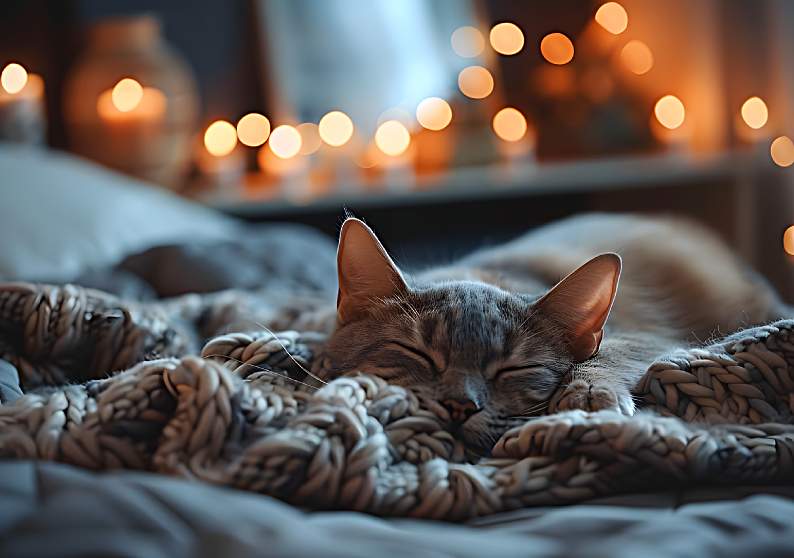words Alana Webb
If you’re about to become a cat owner, there are a few things you’ll need to know. In this guide to making your home cat-friendly, we’re sharing practical tips on preparing for your new feline friend and how to keep them happy and healthy.
Hazard Identification: Common Household Dangers For Cats
You may be surprised to discover that many everyday items we have in our homes are actually hazardous to cats. For example, some houseplants are poisonous to cats, including cheese plants and aloe vera. Be careful too, with seasonal plants, as mistletoe and poinsettia are also hazardous to felines.
Even cut flowers can pose a risk, so before accepting that beautiful bouquet from a friend, make sure it doesn’t contain any lilies, as these are one of the most dangerous flowers for cats. While they may be uninterested in sniffing or eating the flowers, they could still accidentally brush up against them and later ingest the pollen when cleaning their fur.
You should also be cautious about leaving small objects around as these can easily be mistaken for toys or food and ingested either accidentally or on purpose by a curious cat or kitten. Watch out for hair bobbles, elastic bands and small toys with detachable parts.
Securing Your Home: Childproofing Techniques That Benefit Cats
Many of the same techniques new parents use to baby-proof their homes work for cat owners too! For example, child safety locks fitted to upstairs windows can prevent adventure-seeking cats from nasty falls.
Likewise, putting toxic substances, such as medicines, alcohol, cleaning supplies and antifreeze up high or in a latched cupboard helps prevent accidental poisonings.
Kittens and young cats are often particularly interested in electrical cords, mistaking them for rope or string to play with. Where possible store chargers out of your cat’s reach or secure wires with cable tidies or protective sleeves. This not only protects your electrical devices from damage but protects your cat from a potential fatal shock!
Creating a Safe Outdoor Space For Your Cat
When you first get your new cat s/he will need to stay inside for at least a couple of weeks. This helps them acclimatise to their new home and reduces the chance of them getting lost or straying too far when they start to go outside.
Depending on your property and where you live, you could then let your cat play in the garden or you might want to buy or build a catio. A catio is a large outdoor enclosure, a bit like a rabbit run but for cats! Catios can also be adapted for use in flats or apartments or on balconies, to allow cats to explore the outdoors safely, while keeping them protected from threats such as heights, traffic or predators.
Addressing Common Cat Behaviours
Domestic cats display a range of normal behaviours they would engage in if they lived in the wild but which might cause problems for owners.
Scratching is one of the most common complaints – whether it’s carpets, wallpaper, furniture or curtains, cats will often claw or scratch at anything that feels good. This is a normal behaviour that helps them maintain their claws, express their emotions, and mark their territory, so it shouldn’t be discouraged. However, to protect your home and belongings, you should try and direct your cat towards scratching something more appropriate, such as a cat tree or scratching post.
Chewing can be another issue, particularly if your cat bites something that might be dangerous, like a laptop charger or power cord. Cat-proof your main living areas and keep power cables and wires tidy and out of reach wherever possible. Making sure your cat has plenty of toys that are safe to chew and mental stimulation to keep them occupied will also stop them becoming bored and overly curious!







